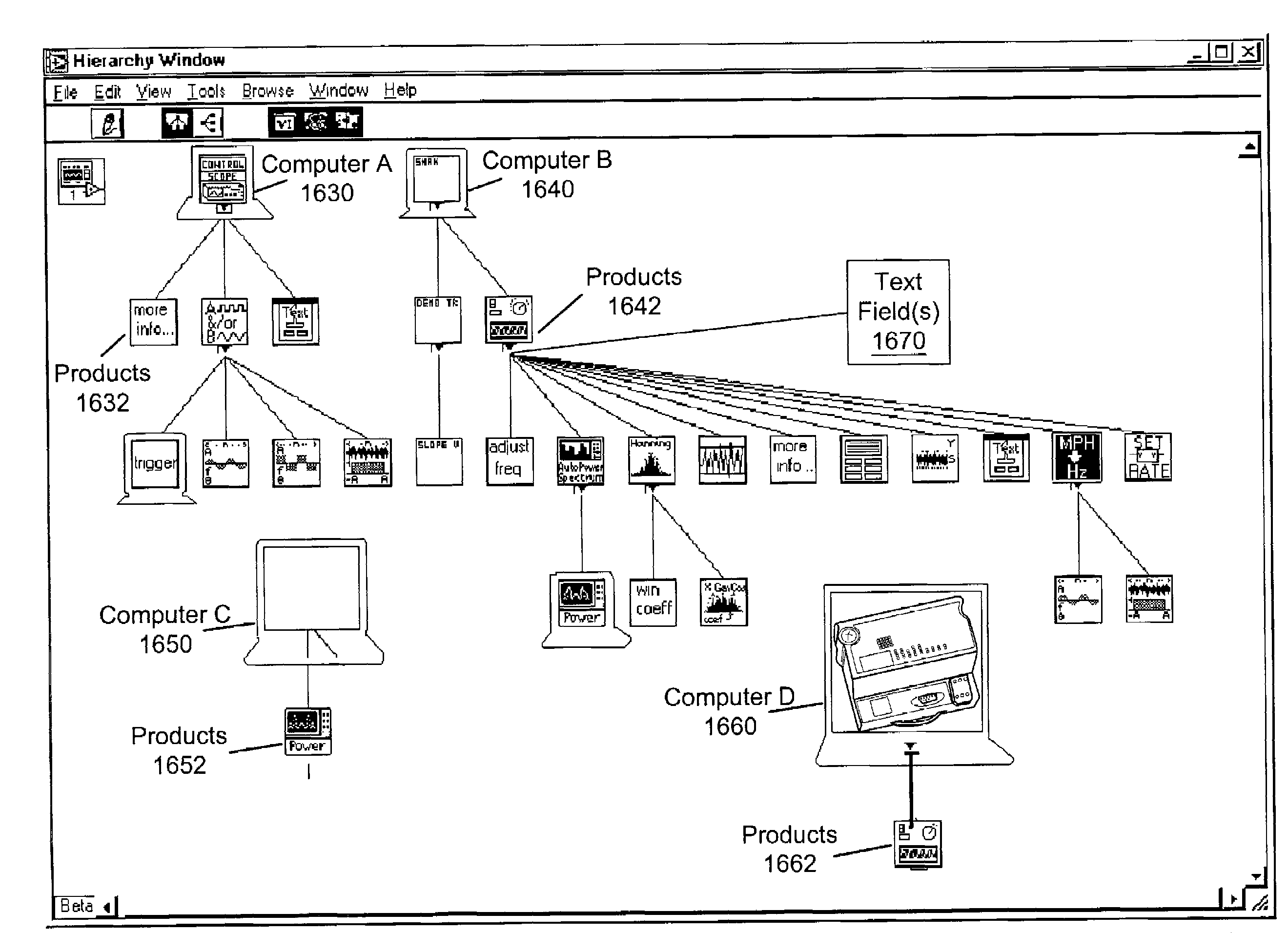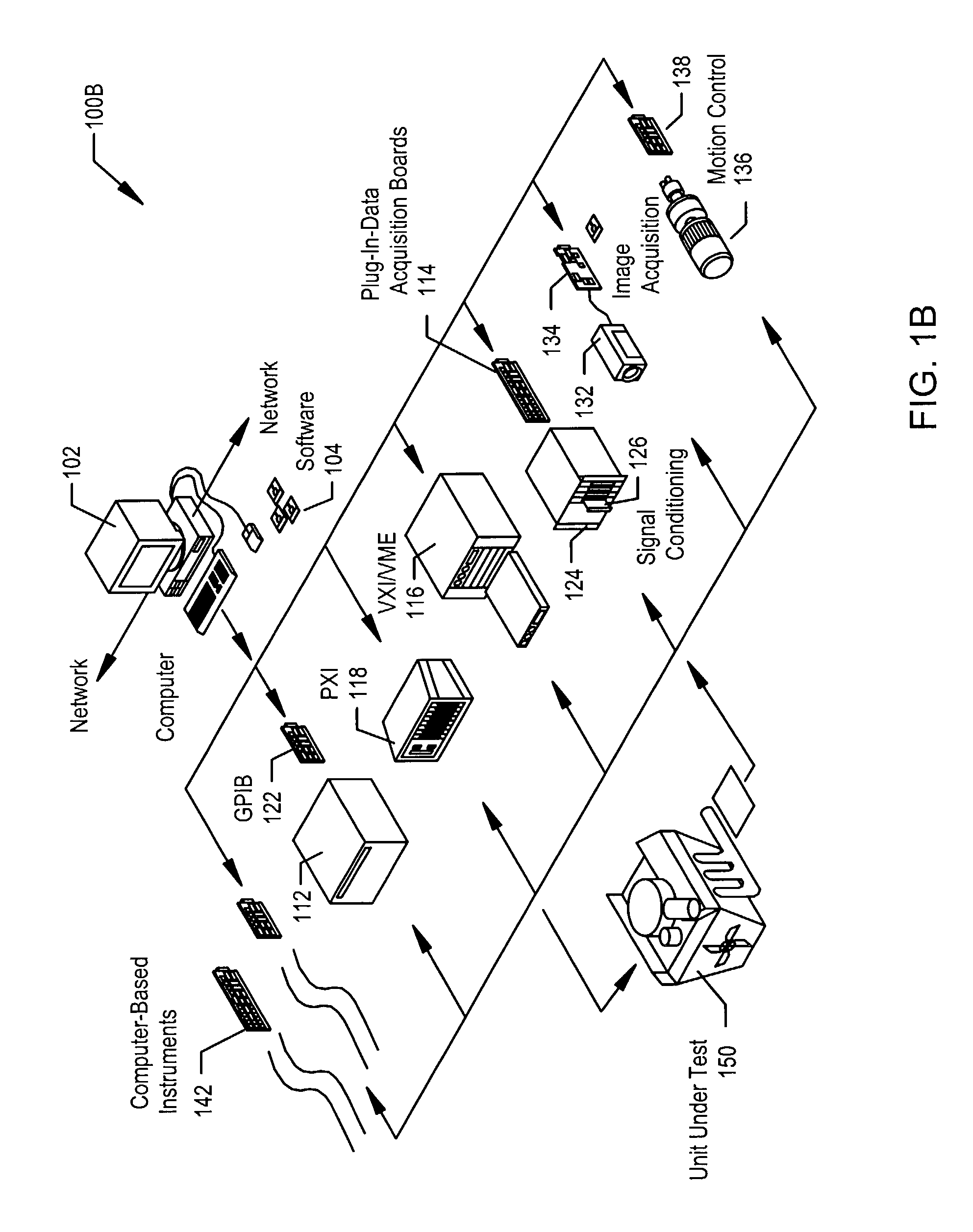Filtering graphical program elements based on configured or targeted resources
a technology of graphical program elements and resources, applied in the field of graphical programming and measurement and automation systems, can solve the problems of user programming skills and ability to interact with the computer system often becoming a limiting factor in the achievement of optimal utilization of the computer system, complex task of programming a computer system to model or implement a process often, and user's inability to fully grasp techniques, etc., to achieve the effect of reducing the effort required, simplifying the configuration process, and preventing incompatible vi/
- Summary
- Abstract
- Description
- Claims
- Application Information
AI Technical Summary
Benefits of technology
Problems solved by technology
Method used
Image
Examples
example use cases
[0123]In some cases, a selected option may be invalid for a given context. In one embodiment, these invalid option selections may be detected by the system, and a more suitable option automatically selected. Below are described several use cases illustrating invalid options and example responses.
use case # 1
Use Case #1
[0124]User has no configured devices and decides to select either option 1 (show attributes for configured devices), or option 3 (show attributes for selected devices). In this case since there are no devices configured, the system may display a warning box indicating that the option is invalid, and the option may be set to option 2 (show all attributes).
use case # 2
Use Case #2
[0125]User has two devices (A & B) configured and the user selects option 2 (show all attributes). However, the user then deselects all the devices from the list. In this case a warning may be displayed indicating that the option is invalid, and the option may be set to option 1 (show attributes for configured devices).
PUM
 Login to View More
Login to View More Abstract
Description
Claims
Application Information
 Login to View More
Login to View More - R&D
- Intellectual Property
- Life Sciences
- Materials
- Tech Scout
- Unparalleled Data Quality
- Higher Quality Content
- 60% Fewer Hallucinations
Browse by: Latest US Patents, China's latest patents, Technical Efficacy Thesaurus, Application Domain, Technology Topic, Popular Technical Reports.
© 2025 PatSnap. All rights reserved.Legal|Privacy policy|Modern Slavery Act Transparency Statement|Sitemap|About US| Contact US: help@patsnap.com



